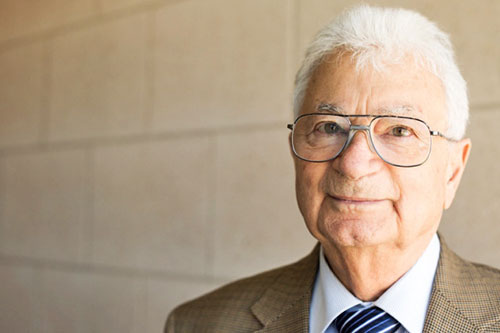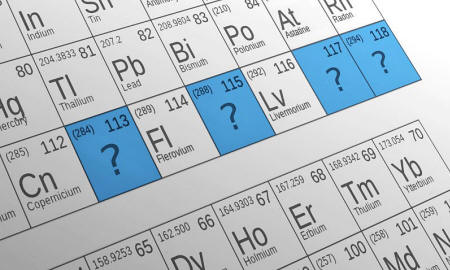|
from
Nature Website
many superheavy elements - and
now one may be named after him.
nihonium, moscovium, tennessine
and oganesson. will soon have four new names added to its lower right-hand corner.
New elements are set to be named,
...according to proposals outlined on 8 June by chemistry's governing body, the International Union of Pure and Applied Chemistry (IUPAC).
The laboratories that were credited with the discovery of the elements - in Russia, the United States and Japan - got to propose the names, under the constraint that elements can be named only after one of their chemical or physical properties, a mythological concept, a mineral, a place or country, or a scientist.
Perhaps the most striking choice, although it was widely predicted, is for element 118, oganesson.
It is named after Yuri Oganessian, an 83-year-old researcher at Russia's Joint Institute for Nuclear Research (JINR) in Dubna, who has helped to discover numerous super-heavy elements.
It will mark only the second time that an element has been named after a living scientist.
The first such occasion led to huge controversy, when in 1993, a team at the Lawrence Berkeley National Laboratory in Berkeley, California, proposed naming element 106 seaborgium, after US nuclear-chemistry pioneer Glenn Seaborg.
At first, a IUPAC committee rejected the proposal after passing a resolution that elements should not be named after living scientists, but it ultimately relented. Moscovium (115) - named after the Moscow region - honors,
And tennessine (117),
A collaboration between the JINR, Lawrence Livermore National Laboratory in Livermore, California, and the Oak Ridge laboratory was credited with the discovery of these two elements.
Element 113, nihonium, is the first artificial element to be named in East Asia.
When its creation was first claimed 12 years ago by a team at the RIKEN Nishina Center for Accelerator-based Science in Wako, near Tokyo, 'japonium' was suggested as a name.
But the RIKEN group (which followed up with a more convincing report in 2012) chose nihonium instead: Nihon (日本) is one way to say 'Japan' in Japanese.
Before this, the most recent additions to the periodic table were flerovium (Fl, 114) and livermorium (Lv, 116).
All such artificial elements, including the latest four, are created in trace amounts in the laboratory by smashing lighter atomic nuclei together - and last mere fractions of a second before they fall apart into smaller, more stable fragments.
IUPAC is allowing five months for public comment on the suggestions, but unless there is an upswell of public protest, the names will be confirmed in November.
|



